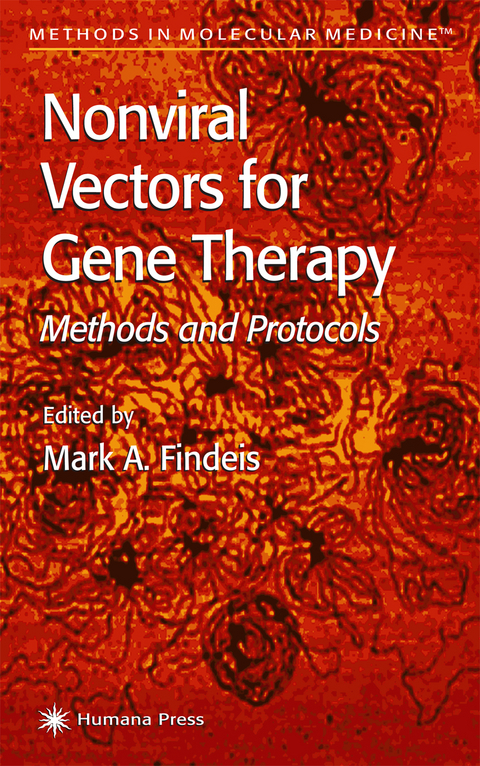
Nonviral Vectors for Gene Therapy
Humana Press Inc. (Verlag)
978-1-61737-145-5 (ISBN)
Synthesis of Polyampholyte Comb-Type Copolymers Consisting of a Poly(L-lysine) Backbone and Hyaluronic Acid Side Chains for DNA Carrier.- Cationic ?-Helical Peptides for Gene Delivery into Cells.- Supramolecular Self-Assembly of Poly(ethylene glycol)-Block-Poly (L-lysine) Dendrimer with Plasmid DNA.- Water-Soluble Cationic Methacrylate Polymers for Nonviral Gene Delivery.- Stabilization of Polycation-DNA Complexes by Surface Modification with Hydrophilic Polymers.- Use of Disulfide Cationic Lipids in Plasmid DNA Delivery.- Interactions of Lipid-Oligonucleotide Conjugates with Low-Density Lipoprotein.- Coupling of Nuclear Localization Signals to Plasmid DNA.- Progress Toward a Synthetic Virus.- Characterization of Polyampholyte Comb-Type Copolymer DNA Carriers.- Methods for Studying the Formation of Polycation-DNA Complexes and Properties Useful for Gene Delivery.- Characterization of DNA Condensates by Atomic Force Microscopy.- Rapid and Systematic Transfer and Recovery of Large BACs/PACs into Mammalian Cells by HAEC Retrofitting.- Systemic Delivery of Therapeutic Proteins by Intramuscular Injection of Plasmid DNA.- Local Delivery of Therapeutic Proteins by Intratumoral Injection of Plasmid DNA-Lipid Complexes.- Nonviral DNA Delivery from Polymeric Systems.- Promotion of Duplex and Triplex DNA Formation by Polycation Comb-Type Copolymers.- Lyophilization of Nonviral Gene Delivery Systems.- Ultraviolet Absorption and Circular Dichroism Spectroscopy of Nonviral Gene Delivery Complexes.- Characterization of Synthetic Gene Delivery Vectors by Infrared Spectroscopy.- Characterization of Cationic Vector-Based Gene Delivery Vehicles Using Isothermal Titration and Differential Scanning Calorimetry.- Light-Scattering Techniques for Characterization of Synthetic Gene TherapyVectors.- Renal Gene Therapy.
"The book begins with a series of chapters covering specific protocols concerning gene delivery agents. These are followed by several review chapters that provide additional information on preparing and characterizing gene transfer agents. Particular focus is given to spectroscopic techniques. The final chapter provides a review of renal gene therapy. Chapters are well organized and often accompanied by helpful figures. Each chapter includes a list of references, an an index is provided. Contributors are from research facilities throughout the world. This book is highly recommended for collections serving researchers in the area of gene therapy." - E-Streams
| Erscheint lt. Verlag | 9.11.2010 |
|---|---|
| Reihe/Serie | Methods in Molecular Medicine ; 65 |
| Zusatzinfo | XI, 399 p. |
| Verlagsort | Totowa, NJ |
| Sprache | englisch |
| Maße | 152 x 229 mm |
| Themenwelt | Naturwissenschaften ► Biologie ► Mikrobiologie / Immunologie |
| Naturwissenschaften ► Biologie ► Zellbiologie | |
| ISBN-10 | 1-61737-145-9 / 1617371459 |
| ISBN-13 | 978-1-61737-145-5 / 9781617371455 |
| Zustand | Neuware |
| Haben Sie eine Frage zum Produkt? |
aus dem Bereich


